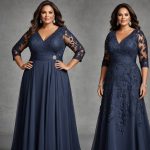Overview of Women’s Fashion Evolution in the UK
Fashion in the UK has always mirrored the nation’s social, economic, and cultural shifts. UK women’s fashion history is marked by dynamic transformations that reflect changing roles and attitudes towards women. From the restrictive corsets and voluminous skirts of the Victorian era to the liberated silhouettes of the 1920s flapper style, British fashion evolution underscores more than mere style—it reveals the evolving statement of identity and freedom.
Historical fashion trends in the UK reveal how pivotal moments shaped attire. For example, wartime rationing in the 1940s ushered in practical, simplified clothing that prioritized function over form but also fostered creativity through fabric ingenuity. Later decades showed rapid changes, such as the rebellious 1960s mod movement and the power-dressing 1980s, each aligning closely with broader social movements and economic realities.
This might interest you : How Can UK Women’s Fashion Foster Sustainable Trends?
The importance of fashion in UK women’s history lies in its role as a visible sign of societal change. As British society shifted towards gender equality and cultural pluralism, fashion became a tool for self-expression and a barometer of progress. Understanding this British fashion evolution allows us to appreciate how clothing reflects much deeper narratives beyond the surface.
1920s to 1930s: Liberation and Early Icons
The 1920s fashion marked a dramatic break from traditional styles, epitomised by the rise of the flapper style. Flappers embraced freedom with shorter hemlines, dropped waistlines, and looser, androgynous silhouettes that challenged previous norms. This look was not mere whimsy but a bold statement shaped by the era’s evolving social freedoms and women’s growing independence. The flapper image symbolised rebellion and modernity, reflecting movements like women’s suffrage and a shift towards a more liberated lifestyle.
Also to discover : How can UK women accessorize for a unique fashion statement?
By the 1930s, elegance returned but retained a sense of ease. Fashion softened, favouring long, flowing dresses that hugged the natural form, inspired by Hollywood glamour. Early fashion icons such as Coco Chanel played an essential role, pioneering styles that blended comfort with sophistication. Chanel’s influence introduced practical, chic garments like jersey dresses and costume jewellery, which became wardrobe staples, enhancing women’s versatility.
These decades redefined fashion as a visual dialogue of personal freedom and social change, setting the stage for modern style evolution while reflecting the complex cultural shifts of the era.
1940s to 1950s: War, Recovery, and New Foundations
During the 1940s wartime fashion, clothing was deeply affected by rationing and utility measures. Fabric was scarce, prompting simpler designs with practical cuts and limited embellishments. Women often wore tailored suits and dresses that adhered to government regulations, emphasizing durability over extravagance. The focus was on resourcefulness, with styles reflecting the serious wartime mood.
As the war ended, the postwar styles of the 1950s sharply contrasted with the austerity of the previous decade. Christian Dior’s revolutionary New Look introduced in 1947 marked a dramatic shift. His designs emphasized a cinched waist, full skirts, and an hourglass silhouette, restoring femininity and glamour to fashion after years of restraint. This look symbolized hope and renewal, inspiring a generation seeking joy and elegance.
Film stars like Audrey Hepburn and Grace Kelly became icons of this era, showcasing the new styles with effortless grace. Their influence helped popularize the softer, more refined looks, blending Hollywood allure with everyday wear. Together, these elements reshaped fashion, moving from wartime practicality to celebratory sophistication.
1960s to 1970s: Youthquake, Subcultures, and Swinging London
The 1960s fashion revolution was marked by a dramatic shift toward youthful self-expression, most famously embodied in the emergence of the miniskirt. Designed by Mary Quant, the miniskirt became a bold symbol of freedom and modernity. This era also gave rise to the mod style, characterized by sharp tailoring, bold geometric patterns, and a clean, sophisticated look that appealed to the young British generation eager to define its identity.
Swinging London was the epicenter of cultural revolutions, where music, style, and youth movements intertwined. British subcultures flourished, creating distinctive fashion markers. Mods, with their scooters and tailored suits, contrasted against the more rebellious rockers and later, the flamboyantly avant-garde.
As the 1970s unfolded, fashion veered toward bohemian styles and punk aesthetics. Vivienne Westwood, a pivotal figure, propelled punk into the fashion mainstream with her provocative designs, mixing DIY ethos with edgy rebellion. This blend of British subcultures during the 1970s pushed boundaries and deeply influenced global fashion narratives, emphasizing individualism and audacity.
1980s to 1990s: Bold Statements and Individualism
The 1980s fashion trends famously embraced power dressing, a style that conveyed confidence and authority through sharp tailoring and bold colors like electric blues and fiery reds. Shoulder pads and statement accessories such as oversized earrings and chunky jewelry defined the decade’s aesthetic, making outfits as much about attitude as appearance.
Moving into the 1990s, a shift occurred with the rise of 1990s grunge—a rebellious movement marked by flannel shirts, ripped jeans, and a deliberately unkempt look. This grunge style starkly contrasted with the decade’s minimalist fashion, characterised by simple, streamlined pieces and muted palettes. Simultaneously, Britpop influenced fashion, celebrating British youth culture with casual, vintage-inspired styles.
British designers like Katharine Hamnett and Alexander McQueen left a lasting impact. Hamnett’s bold slogan tees became synonymous with political activism, while McQueen pushed boundaries with innovative, theatrical designs that challenged traditional fashion norms. Their contributions helped cement an era where fashion served as a vibrant form of self-expression, mixing boldness with a new wave of individualism across both decades.
2000s to Present: Diversity, Sustainability, and Digital Influence
In the 21st century fashion, the UK style landscape has evolved dramatically, shaped by the rapid rise of fast fashion and street style. Digital media’s influence cannot be overstated, as platforms like Instagram and TikTok have transformed how trends spread and how brands engage with consumers. This digital age trend has made fashion more accessible yet also accelerated consumption cycles, raising concerns about environmental impact.
Sustainability has emerged as a pivotal focus in modern fashion. Many designers and brands now prioritize sustainable fashion, integrating eco-friendly materials and ethical production methods to counteract the drawbacks of fast fashion. Consumers increasingly demand transparency, prompting a shift towards circular models and reduced waste.
Diversity and representation in UK fashion have also taken center stage, reflecting the country’s multicultural society. New British fashion leaders champion inclusivity, not only in models but also through designs that celebrate varied identities. This trend enriches the industry by embracing authenticity and pushing creative boundaries.
As digital age trends continue to intertwine with sustainability and diversity, UK style remains dynamic, responsive, and deeply influential on a global scale.
Major Events and Cultural Shifts Shaping UK Women’s Fashion
Exploring how fashion history events intertwined with cultural influence on clothing reveals a rich tapestry shaping UK women’s style. The world wars dramatically affected fabric availability, driving simpler, functional designs during scarcity. Post-war economic booms brought vibrant, optimistic styles reflecting newfound prosperity, showing how economic conditions directly influence fashion choices.
Societal movements played pivotal roles. The rise of feminism challenged traditional attire, encouraging practical clothing symbolizing empowerment and independence. Similarly, increasing recognition of LGBTQ+ rights fostered diversity and self-expression in fashion, breaking conventional gender norms. Multiculturalism enriched British wardrobes with colorful patterns and distinctive fabrics, reflecting an inclusive gathering of global influences.
Media, celebrity culture, and the royal family remain powerful forces shaping trends. From iconic film stars to modern influencers, their fashion statements ripple through society, inspiring mass adoption. The royal family’s sartorial choices often blend tradition with modernity, influencing public perception and style aspirations. Overall, these interwoven cultural shifts provide a complex backdrop to the ever-evolving narrative of UK women’s fashion.
Notable Icons and Designers Through the Decades
British fashion icons have consistently shaped the contours of women’s fashion, leaving a legacy that merges tradition with innovation. Designers such as Vivienne Westwood revolutionized style by introducing punk elements, while Stella McCartney’s commitment to sustainable fashion continues to inspire. These UK designers not only pushed boundaries in fabric and form but also cultivated a unique British aesthetic admired worldwide.
Collaboration between designers and pop culture figures has amplified this influence. For instance, Alexander McQueen’s partnership with celebrities elevated his dramatic designs to global recognition, intertwining fashion with music and film. Such partnerships highlight how influential women in fashion blend artistry with cultural trends, driving new styles embraced by diverse audiences.
Emerging UK designers are building on this heritage by innovating with technology and ethical practices. Their work reflects both continuity and change, sustaining Britain’s pivotal role on the international fashion stage. This dynamic interplay ensures that British fashion icons and UK designers remain at the forefront of shaping women’s fashion, appealing to successive generations.










